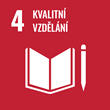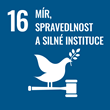Informace o projektu
Continuity and Rupture in Central European Art and Architecture, 1918-1939 — CRAACE
(CRAACE)

- Kód projektu
- 786314
- Období řešení
- 4/2019 - 2/2024
- Investor / Programový rámec / typ projektu
-
Evropská unie
- Horizon 2020
- ERC (Excellent Science)
- Fakulta / Pracoviště MU
-
Filozofická fakulta
- Matthew Rampley, B.A., Ph.D.
- Mgr. Marta Filipová, Ph.D.
- Julia Secklehner, M.Phil., Ph.D.
- Nóra Veszprémi, Ph.D.
When new political elites and social structures emerge out of a historical rupture, how are art and architecture affected? In
1918 the political map of central Europe was redrawn as a result of the collapse of Austria-Hungary, marking a new era for
the region. Through comparative analysis of the visual arts in 3 states built on the ruins of the Habsburg Empire (Austria,
Hungary and [former] Czechoslovakia), this project examines how such political discontinuity affected art and architecture
between 1918 and 1939. The project is organised into 4 themes, each resulting in a monograph:
1. Vernacular modernisms, nostalgia and the avant-garde
2. Presenting the state: world fairs and exhibitionary cultures
3. Piety, reaction and renewal
4. Contested histories: monuments, memory and representations of the historical past
It is the first systematic and comprehensive trans-national study of this type, based on the claim that the successor states
to Austria-Hungary belonged to a common cultural space informed by the shared memory of the long years of Habsburg
society and culture. The project focuses on the contradictory ways that visual arts of artists and architects in central Europe
adapted to and tried to shape new socio-political circumstances in the light of the past. The project thus examines the long
shadow of the Habsburg Empire over the art and culture of the twentieth century.
The project also considers the impact of the political and ideological imperatives of the three successor states on the visual
arts; how did governments treat the past? Did they encourage a sense of historical caesura or look to the past for
legitimation? How did artists and architects respond to such new impulses? In answering these questions the project
analyses the conflicts between avant-gardes and more conservative artistic movements; the role of the visual arts in
interwar memory politics; the place of art in the nexus of religion, national and state identity.
Cíle udržitelného rozvoje
Masarykova univerzita se hlásí k cílům udržitelného rozvoje OSN, jejichž záměrem je do roku 2030 zlepšit podmínky a kvalitu života na naší planetě.
Publikace
Počet publikací: 182
2020
-
Rebelling craftwork. Women designers and craft businesses in early twentieth-century Central Europe
Rok: 2020, druh: Další prezentace na konferencích
-
The Czech Vienna School and the art of the ‘small people’
Journal of Art Historiography, rok: 2020, ročník: 2020, vydání: 22
-
THEIR SAFE HAVEN: HUNGARIAN ARTISTS IN BRITAIN FROM THE 1930S: BOOK REVIEW
Rok: 2020, druh: Popularizační texty
-
Umění, avantgarda a střední Evropa
Rok: 2020, druh: Recenze
-
Years of Disarray 1908-1928: Avant-Gardes in Central Europe: Catalogue review
Rok: 2020, druh: Popularizační texty
2019
-
Across the Leitha : Rudolf Eitelberger and the Liberal View of Culture in Austria-Hungary
Rudolf Eitelberger von Edelberg : Netzwerker der Kunstwelt, rok: 2019, počet stran: 30 s.
-
Artwork of the Month, August 2019: Prague Cathedral by Josef Sudek (1926–27)
Rok: 2019, druh: Popularizační texty
-
Artwork of the Month, December 2019: Hričov by Ferdiš Duša (1933)
Rok: 2019, druh: Popularizační texty
-
Artwork of the Month, July 2019: Family by Gyula Derkovits (1932)
Rok: 2019, druh: Popularizační texty
-
Artwork of the Month, June 2019: The Seipel-Dollfuss Memorial Church by Clemens Holzmeister (1933-1934)
Rok: 2019, druh: Popularizační texty


